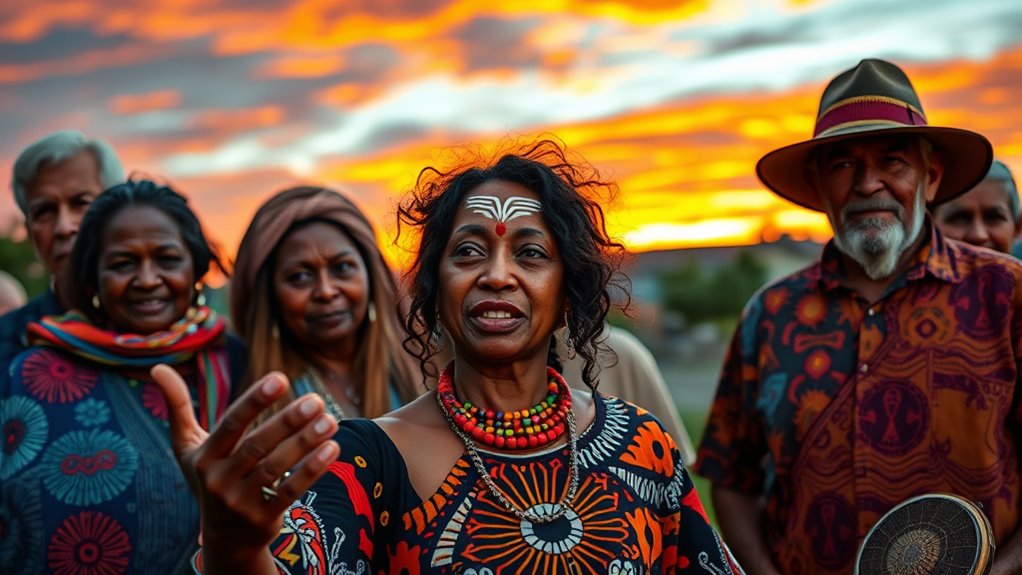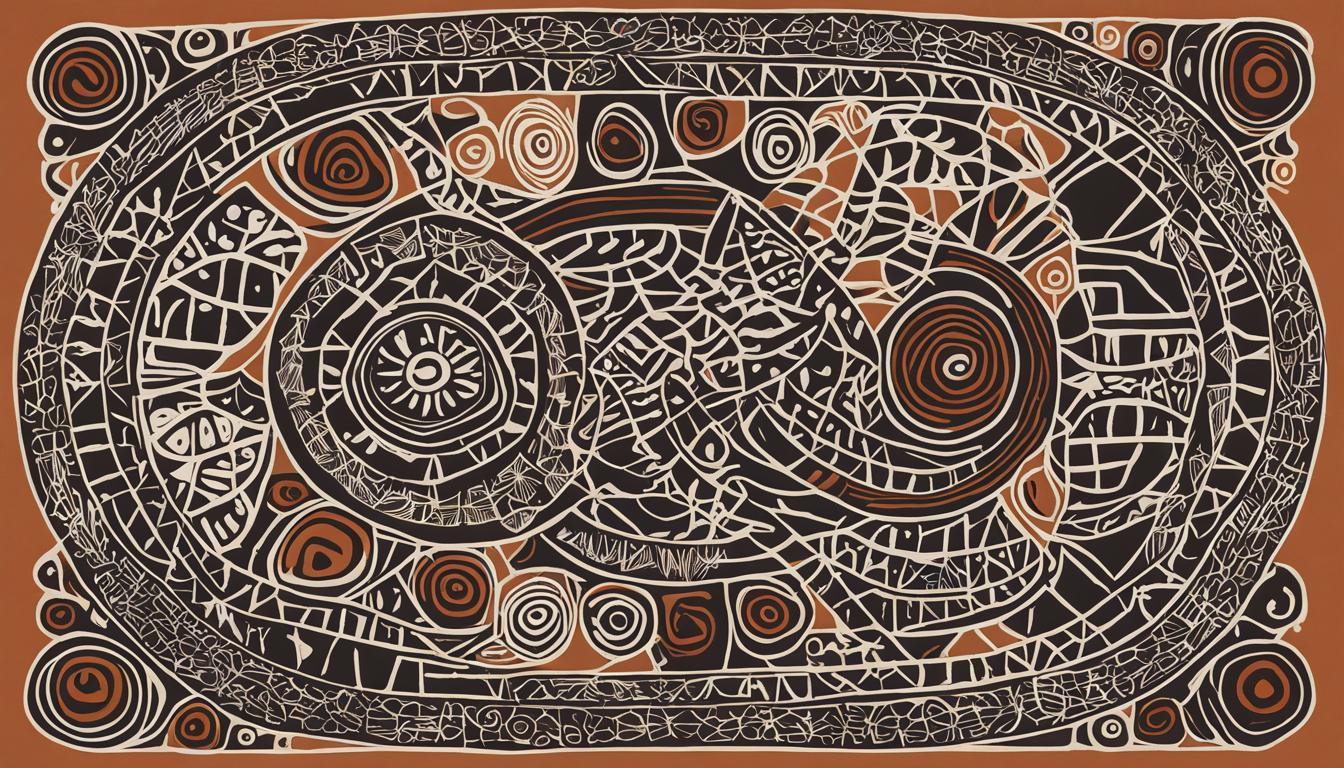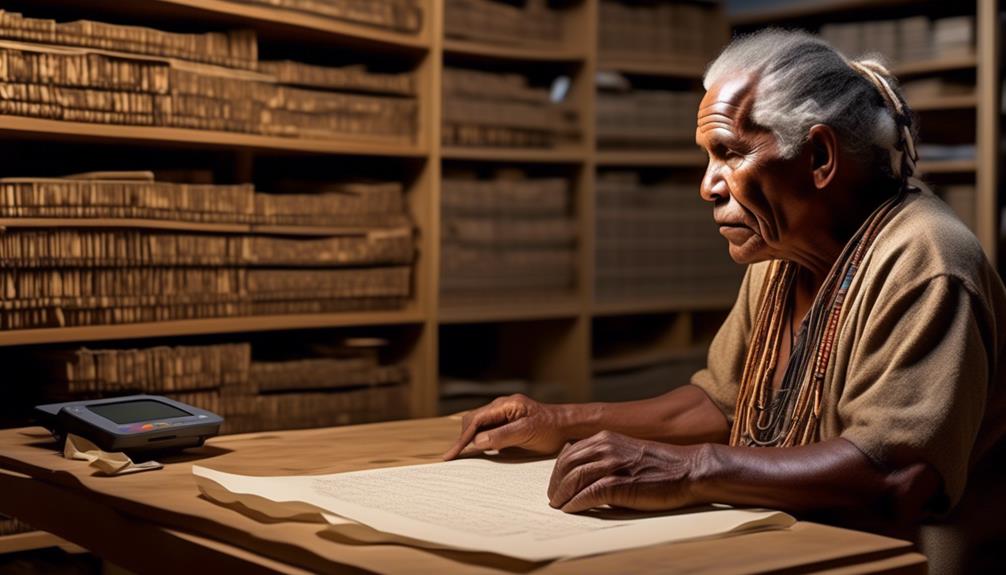Code-switching in Aboriginal English allows you to blend traditional languages with everyday speech, making it a powerful way to express your cultural identity. It helps you preserve your heritage while engaging confidently in various social settings, from community gatherings to formal environments. This practice keeps your language vibrant and connects you to your roots. If you want to discover how this practice strengthens community bonds and cultural resilience, there’s much more to explore.
Key Takeaways
- Code-switching in Aboriginal English reflects cultural identity, blending traditional languages with English to preserve heritage.
- It fosters community connection, enabling individuals to navigate social, ceremonial, and educational spaces.
- This practice demonstrates linguistic resilience, keeping Aboriginal languages vibrant amid societal change.
- Code-switching acts as a form of cultural expression, reinforcing pride and a sense of belonging.
- It highlights the importance of linguistic diversity and the ongoing effort to sustain Indigenous languages and stories.

Code-switching—shifting between different language varieties—is a common feature of Aboriginal English speakers. It’s a natural way for you to traverse your daily life, blending elements of your traditional language with the broader English dialects you use. This practice isn’t just about communication; it’s a powerful expression of your cultural identity. When you switch between languages or dialects, you’re actively preserving your heritage, keeping your cultural roots alive even as you engage with the wider world. It’s a way of asserting who you are, grounding yourself in your community’s history and traditions, while also participating in contemporary conversations.
By code-switching, you’re not only maintaining your language but also strengthening your cultural identity. Every time you incorporate words or phrases from your traditional language into your speech, you reinforce its importance and relevance. This act helps keep your language vibrant and meaningful, passing it down through generations. It’s a subtle yet impactful form of language preservation that goes beyond textbooks or formal settings. You’re living it, making it part of your everyday expression. Many Aboriginal communities see code-switching as an essential tool for cultural continuity, ensuring that your language and stories remain part of your identity, even amidst modern influences.
At the same time, this blending of languages allows you to connect with others in your community and beyond. It’s a shared practice that fosters a sense of belonging and pride. When you switch between Aboriginal English and your traditional language, you’re also steering through different cultural spaces—sometimes informal, sometimes ceremonial, sometimes educational or professional. This fluidity helps you adapt to various situations without losing touch with your roots. It’s a strategic way to honor your heritage while engaging with broader society.
Furthermore, code-switching demonstrates the resilience of your language and culture. It shows that your ways of speaking are flexible, dynamic, and alive. You’re actively contributing to language preservation by using your bilingual or multilingual skills daily. This ongoing process guarantees that your language doesn’t fade away, even as outside influences grow stronger. You’re part of a movement that values linguistic diversity and cultural richness, and your ability to switch seamlessly is a testament to your community’s strength and adaptability. Ultimately, code-switching isn’t just about words; it’s about identity, heritage, and the ongoing effort to keep your culture thriving in a changing world. Language preservation
Frequently Asked Questions
How Does Code-Switching Influence Identity Among Aboriginal Youth?
You find that code-switching influences your identity by allowing you to express your cultural pride and connect with multiple worlds. When you switch between Aboriginal English and Standard English, you actively shape your cultural identity, blending traditions with modern influences. This practice helps you feel proud of your linguistic roots while steering through diverse social settings, ultimately strengthening your sense of belonging and affirming your unique cultural identity.
What Are the Educational Impacts of Blending Languages in Aboriginal Communities?
Imagine your language as a garden that needs nurturing; blending languages in Aboriginal communities helps it flourish. This practice promotes language revitalization, making it easier for students to connect with their cultural identity. It fosters inclusive classroom environments, boosts confidence, and encourages participation. By embracing both Indigenous and standard languages, you create a space where cultural heritage thrives, ensuring future generations continue to cherish and preserve their unique linguistic traditions.
How Do Community Members Perceive Code-Switching in Aboriginal English?
You see community members often view code-switching in Aboriginal English as a way to maintain cultural authenticity while gaining social acceptance. They appreciate how it allows you to express your identity and connect with both traditional values and modern society. Many believe this linguistic blending strengthens community bonds, showing pride in your heritage, yet also helps you navigate diverse social settings smoothly. It’s an essential part of cultural resilience.
Are There Formal Programs Promoting Aboriginal English and Code-Switching Skills?
You’ll find that there are some formal programs aimed at promoting Aboriginal English and code-switching skills, supporting language revitalization and cultural expression. For example, about 30% of Indigenous communities now have initiatives that incorporate these language practices into education and community projects. These programs help preserve cultural identities and empower youth to embrace their linguistic heritage, fostering pride and stronger connections to their traditions through language.
How Does Code-Switching Affect Language Preservation Efforts?
You see, code-switching can both challenge and support language preservation efforts. It demonstrates cultural resilience by allowing you to navigate different worlds while maintaining your identity. When you blend Aboriginal English with other languages, you contribute to language revitalization, making your cultural expressions more adaptable and alive. This dynamic process helps preserve your heritage, ensuring your language stays relevant and vibrant for future generations.
Conclusion
You might think blending languages shows a loss of culture, but in reality, it’s a powerful act of resilience. Code-switching isn’t about losing your voice; it’s about making it heard in multiple worlds. Ironically, by blending Aboriginal English with others, you’re actually preserving your identity in a way that’s impossible to erase. So, next time you see this mix, remember—you’re not just speaking, you’re surviving and thriving against the odds.
Mary is a passionate writer who brings creativity and a fresh perspective to our team. Her words have the power to captivate and inspire, making her an essential contributor to our content. Mary’s commitment to storytelling and dedication to promoting Indigenous culture ensures that her work touches the hearts of our readers. We’re fortunate to have her as part of our team.









